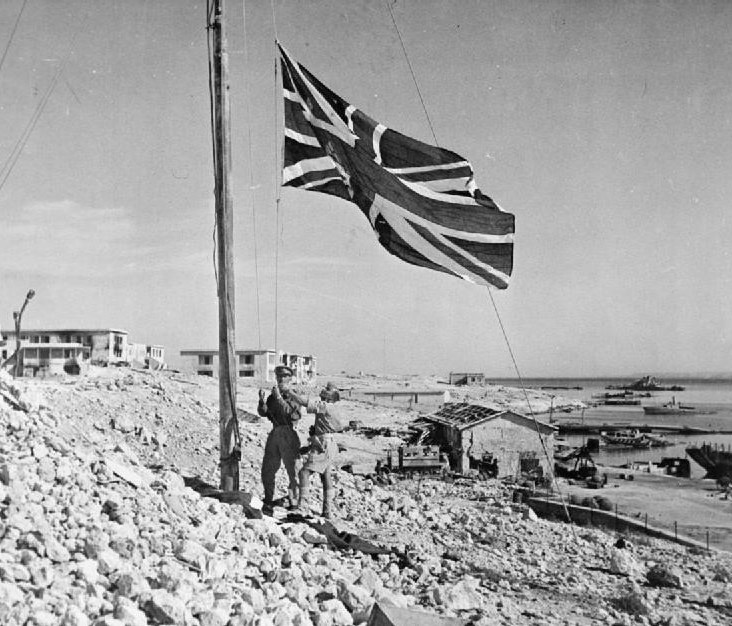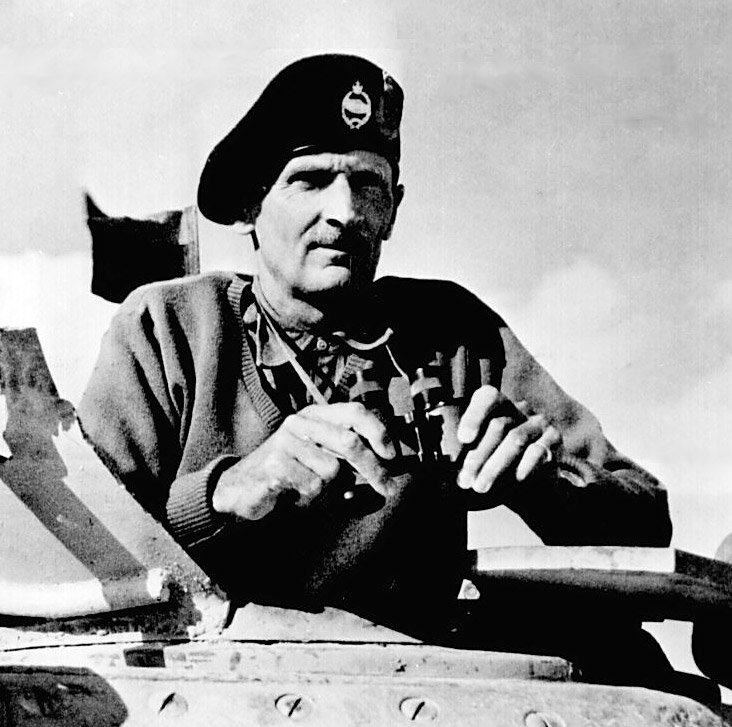The War at Sea
By Francis E. McMurtrie.
The War Illustrated, Volume 6, No. 143, Page 393, December 11, 1942.
In a series of closely contested actions, mostly fought at night, the United States naval forces in the Solomon Islands area, under the command of Vice-Admiral W. F. Hasley, inflicted a severe defeat on the Japanese Navy on Nov. 13-15, 1942.
Though full details have (at the time of writing, some three weeks ahead of publication date) yet to be received, it is evident that the enemy, having failed in previous attempts to dislodge U.S. Marines from the island of Guadalcanal with its important airfield, assembled an exceptionally heavy force in the expectation of crushing all opposition. The core of the attacking fleet is reported to have been formed by the battleships Kongo, Haruna, Hiei and Kirisima, which are the oldest in the Japanese Navy, having been launched in 1912-13. They had been extensively modernized, the armoured decks being thickened as a protection against attack from the air. Mounting a main armament of eight 14-in. guns on a displacement of 29,330 tons, and steaming at 26 knots, they made quite formidable opponents.
In the earlier stages of the fighting the heaviest American ships engaged were heavy cruisers of 10,000 tons, armed with 8-in. guns. In spite of the odds against them, these seem to have stood up well to their more powerful opponents, though two U.S. flag officers (Rear-Admirals Norman Scott and D.J. Callaghan) lost their lives. In the concluding part of the action, Admiral Halsey threw his own battleships into the struggle. Their presence appears to have been unsuspected by the enemy, and thus the American victory was ensured.
Altogether the Japanese lost in this action two battleships (one of which may actually have been a heavy cruiser, perhaps one of the new vessels of the "pocket battleship" type), eight cruisers, six destroyers, eight troop transports and four cargo vessels carrying stores and munitions. No effective aid appears to have been rendered to the Japanese military forces in Guadalcanal, who are now very hard pressed by their adversaries. It is reckoned that some 20,000 or more Japanese sailors and soldiers must have been drowned in this vain attempt to dislodge the Guadalcanal Marine garrison.
American losses were comparatively light, considering the importance of the success gained. They amounted to two cruisers and seven destroyers sunk. No aircraft-carriers appear to have taken part in the action, both sides having lost so heavily in this category that they are naturally unwilling to risk the few precious survivors.
In its effects, this battle is clearly of much greater significance than the Japanese defeat off Midway Island in June. With Guadalcanal firmly in American hands, the Japanese invaders of New Guinea in desperate straits, and the time factor operating against them, our Oriental enemies have sustained the heaviest shock that has yet been administered to their sea power, upon which all else depends. To replace in full their navel losses is beyond the capacity of Japanese shipyards, while the United States Navy is adding daily to its strength. Short of another and even more desperate attempt to retrieve the position by throwing in forces hitherto kept in reserve, it is difficult to forecast the enemy's next move. It would be in keeping with the Japanese character to strike a fresh blow in quite a different direction; but the possibility of this will naturally have been taken into account by the Allied commanders, and preparations made accordingly.
Up to the conclusion of the landings the Allied invasion of French North Africa was entirely a naval operation, organized in advance so far as the British part of it was concerned by the same flag officer who conducted the famous Dunkirk evacuation in 1940 – Admiral Sir Bertram Ramsay. Allied naval forces employed, numbering over 350 warships, were under the chief command of Admiral Sir Andrew Cunningham, former Commander-in-Chief in the Mediterranean, and more recently Head of the British Admiralty Delegation in Washington.
It was the Navy's task to ensure the safe arrival at the appointed hour, at the various landing points, of some 500 ships of varying tonnages and speeds, ranging from large liners to trawlers and tugs. Over 3,000 miles had to be traversed by some of the ships, with the possibility of submarine attack ever in view. Never before in history had a seaborne expedition been successfully launched so far from its starting points without advance bases being provided.
Three main forces had to be landed: one in French Morocco, around Casablanca, under the immediate escort of American warships under Rear-Admiral H. K. Hewitt, U.S.N.; one at Algiers, under Rear-Admiral Sir Harold Burrough; and the third at Oran and neighbouring ports, under Commodore T. H. Troubridge, R.N. At all these points troops were landed at 1 a.m. on Nov. 8.
Obviously, the success of these operations was dependent on a high standard of navigation and the skilful landing of the large number of ships concerned, as well as on perfect understanding between all the units engaged, so as to obviate any unnecessary signalling which would have given warning of approach. That every ship should have disembarked its assault troops punctually, except one that was damaged by torpedo and thus delayed slightly, is the most eloquent tribute that could be paid to the efficiency of the Allied Navies and the merchant shipping under their guidance.
British capital ships and aircraft-carriers, under the command of Vice-Admiral Sir Neville Syfret, with Rear-Admiral Lyster in charge of the carriers, covered the Mediterranean landings; and U.S. capital ships under Rear-Admiral Robert Griffen performed a similar function at Casablanca. Only at the last-named port was there any formidable French naval opposition. This came chiefly from the half-completed French battleship Jean Bart, of 35,000 tons, mounting three 15-in. guns. Shells from the 16-in. guns of the American battleships set her on fire, and her discomfiture was completed by torpedoes from naval aircraft. Now the Jean Bart is a battered wreck, lying half-waterlogged in the naval harbour. Some smaller French warships, mostly destroyers, were sunk or forced to beach themselves, the only vessels to escape being submarines.
At Oran, though two British sloops (former U.S. Coast Guard cutters) were lost, a French destroyer and two torpedo boats were driven ashore, another destroyer and a submarine scuttled, and a second submarine escaped to Toulon. Two other submarines are stated by Vichy to be missing.
Practically all the resistance came from the French Navy, who were also in control of coastal batteries which had to be silenced.
As an impressive illustration of the influence of sea power on the course of war, the expedition to N. Africa can hardly be paralleled.
Previous and next article from The War at Sea
The War at Sea
An important Allied offensive was opened in the South-West Pacific on August 7. In the course of this operation strong forces of the United States Marine Corps were landed on certain of the islands of
The War at Sea
The latest results of the war against the U-boats, announced in a joint statement by the Prime Minister and President Roosevelt on August 14, are the equivalent of a great sea victory. Over a per
Index
Previous article
Next article
Victor of the Battle of Egypt
Hard on the heels of Rommel's shattered columns, the 8th Army's commander watches the pursuit from his tank turret. Thirty-four years have passed since Bernhard Law Montgomery joined the Royal Warwi





